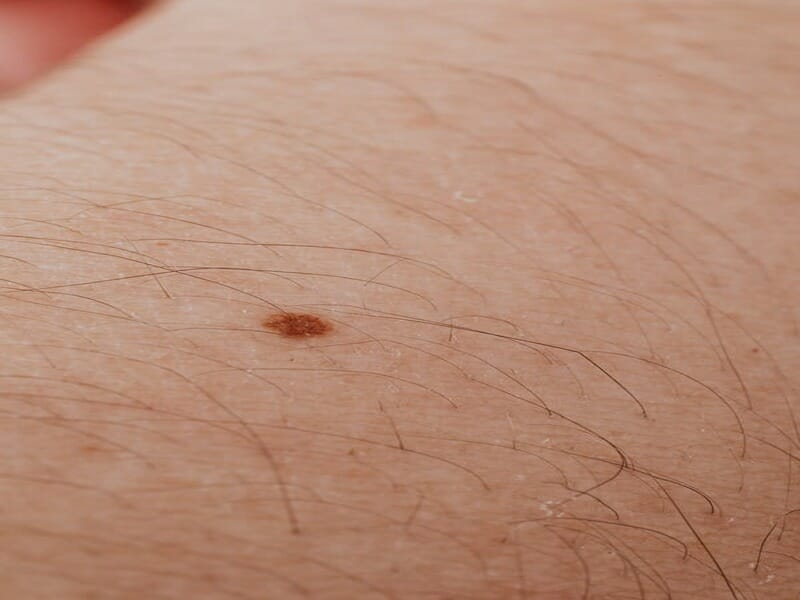Whack a mole: signs your mole needs to go!: Melanocytic nevus generally known as the mole, is a blister or a spot on the skin. They are about half an inch. They can be flat or inflated. They vary in colour from red to brown to the same as your skin colour. It is popularly referred to as a beauty spot. Moles can be found anywhere on the body based on genetics from hands, feet to buttocks and genitals. Overexposure to the sun causes discolouration of already present mole. It can also be the cause of new moles. Regular monitoring of moles and seeking professional advice if any changes are observed is a key aspect of preventive healthcare in skin wellness.
Moles, in general, are not deadly. But if you have too many moles and they tend to change in colour or size, you should consult your doctor. Moles are sometimes signs of the presence of malignant cells, which can cause skin cancer. If you find anything suspicious about an already present or new mole, it’s safer to get yourself checked as part of preventive healthcare.
All moles won’t cause melanoma. But to find a mole that fits ABCDE of melanoma has a good risk of being cancerous.

- A stands for asymmetry- Check if any mole has both halves of it in different colours.
- B stands for the irregular border- Check the border of the mole/moles for irregularities.
- C stands for Blotchy spots along with colourations such as black, blue, red, white or grey.
- D stands for Diameter – Check if the mole is getting bigger.
- E stands for Evolving – When the spots or moles change over time in size, shape, colour, etc.
Normal moles won’t show any of the above signs. They are ineffective and don’t cause any harm. If you have a new mole after 25 years, you need to visit a doctor for preventive healthcare. More the moles, more the probabilities of melanoma. Keep the following in mind;

- Coloured or skin colour spots not bigger than 10 mm.
- Constant shape. The size and shape do not change.
- Even if you have more freckles or spots than normal, you have a higher probability of skin diseases or cancer.
- Check the mole regularly for anything unusual.
The American Cancer Society asks to look out for these red flags:
- A sore that doesn’t heal.
- The skin surrounding the mole changes its colour to the colour of the mole.
- Redness around the border of a mole.
- Itchiness or pain.
- Changes in the surface of a mole— for example the appearance of a lump, etc.

Removal of skin mole
Most moles are harmless and don’t need to be removed. But if your dermatologist states that the mole looks suspicious, then you have to get rid of it. It can be done quite easily. To remove a mole, your dermatologist will numb the area around the mole, and then cut it off. After removing the mole, it is essential to close the area with a few stitches. The tissue will then be checked for cancer. By getting any suspicious ones checked out quickly, you can detect skin cancer in its earliest stages. It is most treatable during its early stages for better preventive healthcare. You might even use a mole eraser. You can also rid yourself of moles using cosmetics. Always remember to consult your doctor before this.
Most of the time, moles are not harmful. You don’t have to remove a mole based on it, even though it might look ugly to you. Love yourself, love your mole. But if you find any signs that it might be cancerous, consult your doctor as part of preventive healthcare. For more such info check out our blog for various articles.
How can I remove a mole?
A doctor might remove a skin mole by either shaving or surgical cutting. A dermatologist may shave off smaller moles but recommend cutting for larger or cancerous ones. Depending on the size of the removal area, you may need stitches. It can also take two appointments to completely remove a mole.
What causes moles in your body?
Moles are caused when cells in the skin called melanocytes grow in clusters. Melanocytes are generally distributed throughout the skin. They produce melanin, the natural pigment that gives skin its colour.
Is it normal to get new moles?
Moles, or nevi, typically form during childhood and adolescence, but new moles can appear in adulthood. Although most moles are noncancerous, or benign, the development of a new mole or sudden changes to existing moles in an adult can be a sign of melanoma.
How do cancerous moles start?
A cancerous mole, or melanoma, is the result of damage to DNA in skin cells. These changes, or mutations, to the genes, can result in cells growing rapidly and out of control. Melanoma is a type of skin cancer that occurs when pigment-producing cells known as melanocytes mutate and begin to divide uncontrollably.
Do moles grow bigger with age?
New moles tend to appear and existing ones tend to get larger and darker during the teen years and during pregnancy. Moles may change over time. They may get bigger, grow hair, become more raised, get lighter in colour, or fade away. Many people develop new moles until about age 40.


